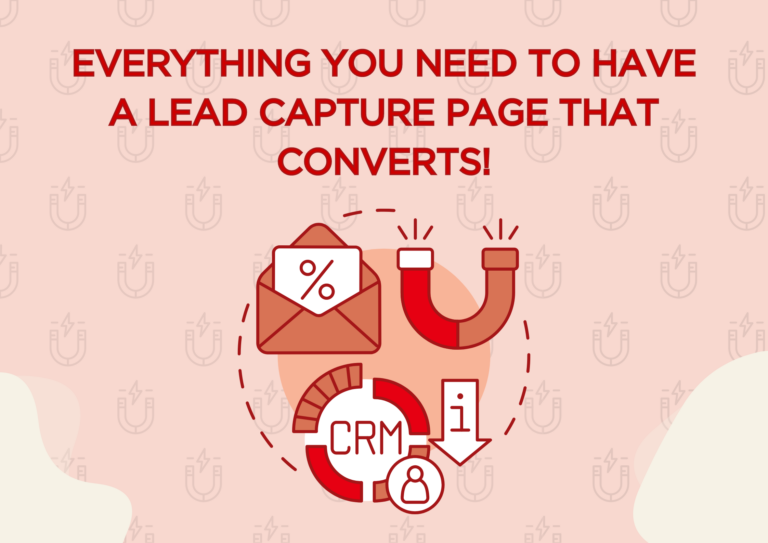Everything You Need to Have a Lead Capture Page that Converts
Every business finds that converting leads to conversions. But it is one of the pivotal steps in creating a successful business.
A well-designed lead capture page creates the foundation for continued interaction with potential customers and acts as their initial point of contact with your brand.
We will go into detail in this extensive guide on how to make a lead capture page that draws in visitors and turns them into leads, opening the door for more conversions and sales.
Understanding Lead Capture Pages
Often called a landing page or lead capture page, this type of page is made with the purpose of gathering visitor information, usually via a form, in return for something of value, such as a free trial, webinar, ebook, or discount code. The primary goal in converting visitors into leads is to obtain sufficient information to enable further communication.

1. Define Your Target Audience
Understanding your target audience clearly is essential before you begin creating your lead capture page. This comprehension affects every aspect of your page, including the design and content.
Make buyer personas to better understand the needs, objectives, difficulties, and habits of your prospective clients. Conversion rates are higher when your page is customized to address the unique needs and concerns of your target audience.
2. Offer Clear Value
You need to clearly state the value proposition on your lead capture page. Why would someone visit your form and fill it out?
Highlight the benefits of your product or service using language that is both captivating and easy to comprehend. Make sure the offer is compelling and fits your audience’s interests, whether it is a free trial, a downloadable guide, or access to special content.
3. Design with Purpose
Your lead capture page should be designed with clarity and simplicity in mind to improve user experience and direct visitors to the desired action. Here are key design elements to consider:
– Visual Appeal: Make sure your target audience can relate to and understand your message by using high-quality images or videos.
– Clear Layout: Stay away from mess. Make good use of whitespace to highlight your form and call to action.
– Responsive Design: With the increasing popularity of mobile browsing, make sure your page looks fantastic and works properly on all devices.
4. Craft Compelling Content
You should have succinct but impactful content on your lead capture page. Employ attention-grabbing headlines and compelling body copy to compel readers to take action. Here’s how to make the most of your content’s impact:
–Headlines: Craft a headline that enumerates the advantages of your offer in unambiguous terms. It must grab the reader’s attention and be pertinent to them.
– Bullet Points: To summarize important advantages, use bullet points. This facilitates the information’s digestion.
– SEO: Use pertinent keywords to enhance your content’s optimization in order to raise your page’s organic search engine rankings.
5. Optimize the Form
Your lead capture page revolves around the form. Its functionality and design have a big influence on your conversion rates. Keep the following in mind:
– Length of Form: Only request the data that you actually require. Longer forms may discourage people from filling them out.
– Field Types: Use the right field types (such as checkboxes and dropdown menus) to expedite and simplify completion.
– Privacy Policy: Provide a link to your privacy statement to establish credibility and demonstrate your responsible handling of user data.
6. Implement a Strong Call-to-Action (CTA)
To turn site visitors into leads, your call to action (CTA) is essential. It should be conspicuous, captivating, and unambiguous. Make it stand out by using action-oriented language and a contrasting color. Clearly state in your call to action what the visitor will receive in return for providing their information.
7. Test and Optimize
Your marketing plan should always include lead capture pages. Their effectiveness can only be increased through constant testing and optimization. To determine what works best for your audience, test various iterations of your page using A/B testing. Play around with the headlines, CTAs, images, and form layouts.
9. Make Use of Social Proof
Testimonials, client endorsements, and social media mentions are examples of social proof that can greatly boost trust and encourage conversions. Credibility can also be increased by showcasing the logos of reputable partners or customers as well as data regarding your clientele and the efficiency of your offerings.
10. Keep Track of and Examine Results
Track the effectiveness of your lead capture page with analytics. To determine what is and is not working, look at metrics such as traffic, bounce rate, conversion rate, and traffic source. You can use this information to help you decide what modifications are required.
Understanding your audience, creating with a purpose, and continuously tweaking based on performance data are all necessary to create an effective lead capture page. You can make a lead capture page that not only looks good but also encourages conversions and helps your business develop by following these comprehensive steps.
By implementing these strategies into your digital marketing plan, you will be able to generate more leads more quickly, which will help you expand your consumer base and increase customer engagement, both of which will contribute to the success of your company.
